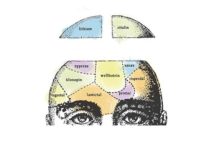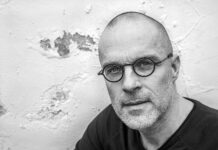In the last year of high school, my daughter’s personality suddenly changed, almost overnight it seemed. Initially, I chalked it up to adolescence.
What had happened to my shining star? My bright, loving and outgoing daughter who was looking forward to college—where did she go? How could I get her back?
I was at a total loss, a single parent with three children and no idea where to go. We tried many things, but nothing seemed to work. Eventually my daughter ended up in a hospital.
The next ten years we spent navigating a fragmented and often difficult mental health system in several states. Those ten years were the loneliest and most difficult years of my life.
Never had I felt so alone, forlorn or blamed for being the cause of my daughter’s illness.
My daughter was treated as a diagnosis with dim prospects rather than as a beautiful young woman with hopes, dreams and potentials. Not once did I hear someone ask her, “What are your dreams for the future?” or “How can we help you achieve your goals?”
Treatment had become mistreatment. My daughter had become a collection of symptoms to be managed and controlled with a battery of medications, hospitals and group homes. Recovery was a word I would only learn many years later.
I started dreading the calls from mental health professionals. The news was never empowering. They would tell me they could not help my daughter and needed to send her back home. Or they would call to tell me she had run away… again. Looking back, I would have run too. About the only route we did not travel was jail, which for many has become today’s mental hospitals.
My daughter, with her self-determined discharges and non-compliance, was considered a problem. I was considered too demanding or unrealistic.
As my daughter’s health worsened, so did mine. I developed debilitating asthma. I became literally and figuratively out of breath. Well, almost…
No matter how bad things got, I still refused to accept the status quo. When I asked if we could create treatment plans that met my daughter’s unique needs, I was told I didn’t understand. It was made clear that I should accept ill-fitting diagnostic labels and treatments if I wanted any help from the mental health care system.
Hope had become a four-letter word. I was told over and over again to learn to live with my daughter’s illness and her limitations.
In other words, recovery was pipe dream. Getting better, unrealistic.
The clincher, after a decade of trying to find real help, was when I was told that I had probably caused my daughter’s mental illness. That it was my fault.
The moral of this story: Never make a Mother Bear mad!
Not only was I mad, I was also smart enough to know that my anger and frustration would not solve any problems.
Instead, I decided to turn my anger into action and asked my husband Don, with his considerable business acumen, to join me in starting a non-profit residential healing community.
While he had been looking forward to a leisurely retirement, I managed to convince him otherwise. He will tell you today that this is the most meaningful work he has ever done.
Our vision was to create a place where hope would be the first order of business, where acceptance and community would be commonplace, where individuals would be treated with kindness and respect. We would focus on strengths and potentials rather than diagnoses. Our residents would be welcome guests not “cases” to be “managed.”
Treatment would be person-oriented and would encompass the body, the mind and the soul. We would ask residents about their dreams and goals, and we would help them develop the skills to reach them. All of this combined would become what is now CooperRiis Healing Community (http://www.cooperriis.org).
As our vision became reality, there was not a stone laid or a decision made without reflecting on what our daughter would want. What would help her to heal? What could we do to make our community beautiful, peaceful, meaningful, and purpose driven?
During initial staff training, our daughter shared her insights and helped us develop our training program. I often heard her say, “That might be what the textbook says, but let me tell you what it is really like.” She knew better than any of us.
Through my daughter’s hard-won experience and wisdom and the philanthropic generosity of so many, CooperRiis is now a place where a dentist or an artist, a student or a lawyer, a homemaker or a teacher, your neighbor or family member can recover from mental illness and go on to lead productive and meaningful lives.
I am truly grateful we have been able to create a wonderful healing community here in North Carolina that has helped hundreds of families from all over the world. But I realize this is only a drop in the bucket.
Over the past nine years, families have often asked us,
“Where is our CooperRiis?” and “Where can we go for healing and support?”
In our next blog, we’ll share what we’ve been telling them recently.
















Lisbeth – I am so inspired to hear about your project directly from you after hearing about it glowingly from so many other people in recent months. I look forward to hearing more through your blog and hopefully meeting you in person before too long. I was 18 years old the first time I was hospitalized and I am very passionate about reaching out to teenagers who are having their first “breaks.” I really get the vision of the Mother Bears and it fills me with a lot of hope. Check out my blog and lets talk sometime! Mad love, Sascha
Report comment
Dear Sascha,
Thank you for your kind words. I love your spirit and look forward to getting to known you, share dreams and visions and together eliminate that awful label: mental illness and instead speak about hope, recovery, dreams and empowerment…
Yours, Lisbeth
Report comment
Thank you for sharing your story on this blog. I love reading about it, every time, because it is so much like mine and, you offer hope. I too am a Mother Bear and the psychiatric community has finally got my Moma Bear blood flowing. We (my adult son and I) are on a holistic path and I dream of creating a place like yours. My son is no longer a “case” to be managed and it is my hope that I live long enough to see him recover and have professionals who believe recovery is possible, along with a community of supportive people who understand. Thanks again!
Report comment
Beautifully written. Even “knowing” you for all these years I never knew this story. Blessings to you for doing this work to help so many people.
with love,
Laurey
Report comment
And I’m glad you did make cooper-riis healing community because It turned my life around and I live a decent life now. thanks
Report comment
Lisbeth, you are a true inspiration and your understanding the need for a network where others can find healing is a Godsend. We have to get the word out that there is help and a hope other than the fractured system that is the status quo. If only I had known of Cooper Riis when I was on the lightning speed roller coaster of dual diagnosis with my daughter. I lost her to a failed system and misdagnosis. She self-medicated herself to death.
I am a mother bear who has a passion to never see other families navigate this path alone. We have to effect change, and we can do it, one family at a time. Thank you so much.
Report comment
Dear Lisbeth,
Your maternal caring is a daily inspiration to me and so many others who know you. Both gentle compassion and fierce protectiveness for those suffering can be counted on from you. Your mother bear’s heart is big enough to lovingly respond to the crucial unmet needs of an ever growing circle of people who aren’t getting what they need elsewhere.
Bless you my friend, Michael
Report comment
Lisbeth-
Thank you so much for sharing and using your mother bear qualities not only to fight back but to nurture and grow!
I have sent off the link to your blog to NAMI so that we can continue be staunch advocates for the humanistic treatment that we as people given mental health diagnosis deserve when we experience extreme distress. You go girl!
Keris
Report comment
I was sent into the psych system to be a witness against it and write a book exposing it. I am a Christian who writes about the fact that psychiatry is atheistic and has falsely called christians and others with spiritual experiences schizophrenic, for 50 years, since Freud, the atheist father of psychiatry.
My FREE book Manual for Transformational Healing-God’s Answer to Psychiatry, exposes atheistic psychiatry & their genocide by toxic drugs, and tells how to heal mental & physical illness thru prayer.
Many psych patients are spiritually sensitive people who are really gifted spiritually and need to use the sensitivity to pray for others. Often what they feel is not their own stuff but actually burdens from God or others that need prayer. But a lot of christians don’t understand this. Instead they take drugs which make them numb. This is not the solution. Playing an instrument is a big part of this; worship music heals us and others & is powerful intercession. PLease share my book and website with anyone involved in the issue of mental health. http://www.1prophetspeaks.com
all is free
Report comment
Addition to my last post:
SOmetimes all one needs to do is change one’s environment. The new testament says mental and physical illnesses are caused by demonic oppression. Jesus rebuked them and gave his followers authority to do it. It works. I have rebuked depress-, canc-, astha, and been healed of sexual disease when I repented of sinning.
Ch 7 of Free book Manual for Transformational Healing-God’s Answer to psychiatry, and my free minibook Spiritual WIsdom talk about assessing one’s environment for openings for demonic oppression. These include:
unrepentant sin, all drugs which affect the mind, inclding caffeine, nicotine, alcohol, pot, lsd, etc & psych meds, bad books, music, art, symbols or occult objects. When this stuff is removed, oppression lifts and we get healed. Whatever spirit inspires the music, books, video, art etc gets transmitted to the recipient, evn if it is just sitting there, unused. we are all affected by our environment, though many not consciously. The word ‘inspiration’ means ‘a spirit goes into it’.
also, God talks to all of us in our thoughts. We all “hear voices” as thoughts in our heads. It is not psychosis, it is normal. Christian theology makes this clear. Jesus said “my sheep hear my voice” John 10:27.
Atheistic psychiatrists are trained to think that anyone who hears voices is having an auditory hallucination, an alleged symptom of psychosis. this is a lie. God and demons are real, not hallucinations, not imaginary. Many christian patients have told their dr’s that they are being afflicted by demons, and the idiot dr’s think they are just having “hallucinations”; rather they are being given a testimony of spiritual reality! How many testimonies do they have to hear before they realize their worldview is wrong! Their thinking is all circular from an atheistic viewpoint; if one experiencs it, they think it is a hallucination, if one believes in it, it is a ‘delusion’. All nonsense.
People feel healed when their reality is affirmed, not denied. The biggest brainwashing problem in mental hospitals is that drs will tell patients NOT to trust their own thoughts. Such a mindset would make anyone worse, not better.
http://www.1prophetspeaks.com
Report comment